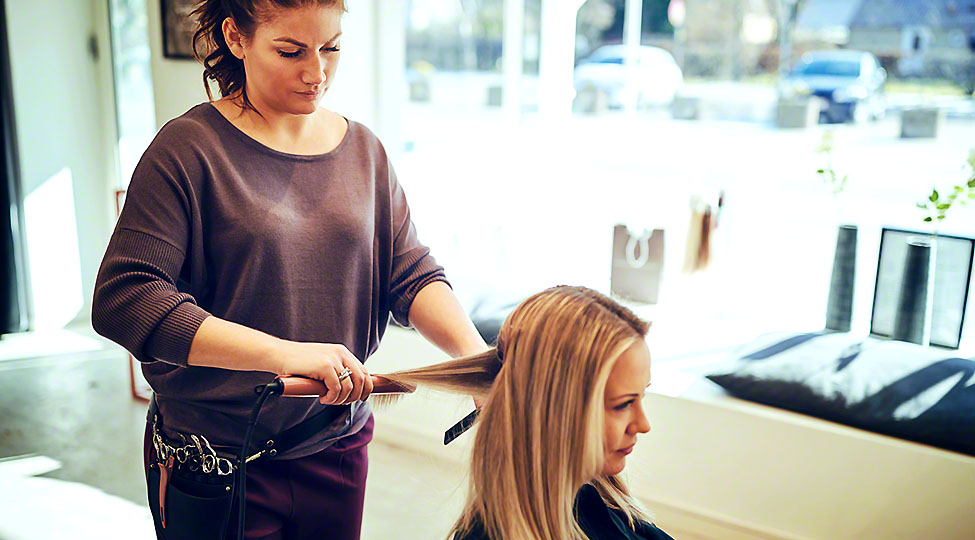Hair extensions can transform your look, adding volume, length, and even a splash of color. However, choosing the right extensions for your hair type is crucial to achieving a natural and beautiful appearance. With various options available, understanding your hair’s unique needs and characteristics can make all the difference. This guide will help you navigate the world of hair extensions salon, ensuring you make the best choice for your hair type.
Understanding Your Hair Type
Before diving into the types of hair extensions available, it’s important to assess your hair type. Hair can be classified based on its texture, thickness, and curl pattern. Generally, hair falls into four main categories: straight, wavy, curly, and coily. Each category has its distinct characteristics and requires different considerations when choosing extensions.
If you have straight hair, you might find that your extensions should also be straight to blend seamlessly. For wavy or curly hair, it’s essential to match not only the texture but also the curl pattern. Additionally, the thickness of your natural hair matters. If you have fine hair, lightweight extensions are ideal, whereas thicker hair may require more robust extensions to blend properly.
Different Types of Hair Extensions
There are several types of hair extensions available, each with its advantages and disadvantages. The main categories include clip-in, tape-in, sew-in, and micro-link extensions. Understanding these options can help you determine which type will work best for your hair.
Clip-in extensions are a popular choice for those who want versatility. They can be easily applied and removed, making them perfect for special occasions or a temporary change. If you have fine hair, clip-ins should be lightweight to avoid pulling on your natural hair. On the other hand, tape-in extensions provide a more semi-permanent solution. They are applied using a special adhesive and can last several weeks. If you have medium to thick hair, tape-ins can offer a seamless blend.
Sew-in extensions, often referred to as wefts, are great for thicker hair. These extensions are sewn into your natural hair, providing a long-lasting solution. If you have coarse or thick hair, this method can create a fuller look. Micro-link extensions, also known as bead extensions, involve attaching small sections of hair using tiny beads. This method is suitable for various hair types but requires careful installation to prevent damage. An alternative is keratin treatment by hairstylist Rockville.
Matching Texture and Color
When selecting hair extensions, matching the texture and color of your natural hair is essential. For straight hair, look for extensions that offer a smooth finish. If you have wavy hair, choose extensions that have a similar wave pattern. Curly or coily hair types should seek extensions that match their curl pattern closely, as this will help achieve a natural look.
Color matching can be a bit tricky, especially if you have highlights or lowlights. Many extension brands offer a wide range of shades, so it’s wise to bring a sample of your hair color when shopping. Additionally, consider the option of getting extensions that are slightly darker than your natural hair color, as this can create depth and dimension. If you’re feeling adventurous, ombre or balayage extensions can add a fun pop of color without the commitment of dyeing your hair.
Length Considerations
The length of your extensions is another important factor to consider. When deciding how long you want your extensions to be, take into account both your natural hair length and the look you want to achieve. If you have short hair and wish to add significant length, opt for longer extensions. However, keep in mind that the longer the extensions, the more weight they will add, which can put stress on your natural hair.
If you’re unsure about the length, it’s helpful to try different options. Many retailers allow you to see how the extensions will look before purchasing. You can also experiment with shorter extensions that add volume without sacrificing too much length. Ultimately, choose a length that complements your natural hair and feels comfortable for you.
Maintenance and Care
Different hair extension types require varying levels of maintenance. Clip-in extensions are the easiest to care for, as they can be removed when not in use. They should be washed separately and stored properly to keep them in good condition. Tape-in extensions require a bit more care since they are semi-permanent. Regularly brushing the extensions and avoiding heavy styling products will help maintain their integrity.
Sew-in and micro-link extensions can be more demanding in terms of maintenance. These extensions need to be checked regularly to ensure that the bonds are secure and that your natural hair is not being damaged. You should consult with a stylist for the best care routine, which may include special shampoos and conditioners.
Professional Installation vs. DIY
While some people may choose to install extensions themselves, consulting a professional is often the best route. A skilled stylist can ensure that the extensions are applied correctly, minimizing damage to your natural hair and achieving a seamless blend. If you opt for clip-in extensions, you might feel comfortable applying them yourself. However, for methods like sew-in or tape-in, professional installation is highly recommended.
When selecting a stylist, look for someone experienced in working with extensions. They can provide valuable insight into what type of extensions will work best for your hair type and help you maintain your new look.
Listening to Your Hair
Finally, it’s crucial to listen to your hair. If you notice any signs of stress, such as breakage or excessive shedding, it may be time to reassess your extensions. Hair health should always come first. Regularly checking in with your hair care routine and adjusting as needed will ensure that your extensions enhance your natural beauty rather than hinder it.
Conclusion
Choosing the best hair extensions for your hair type is a journey that involves understanding your unique needs. By evaluating your hair type, exploring different extension methods, and paying attention to texture and color, you can find the perfect match that complements your natural hair. Whether you desire length, volume, or a splash of color, the right extensions can elevate your look and boost your confidence.
Getting help from high-quality hair straightening salons Rockville and seeking professional help can make a world of difference. Embrace the opportunity to experiment with your style while prioritizing the health of your natural hair. With the right knowledge and care, you can enjoy the transformative power of hair extensions for many years to come.

